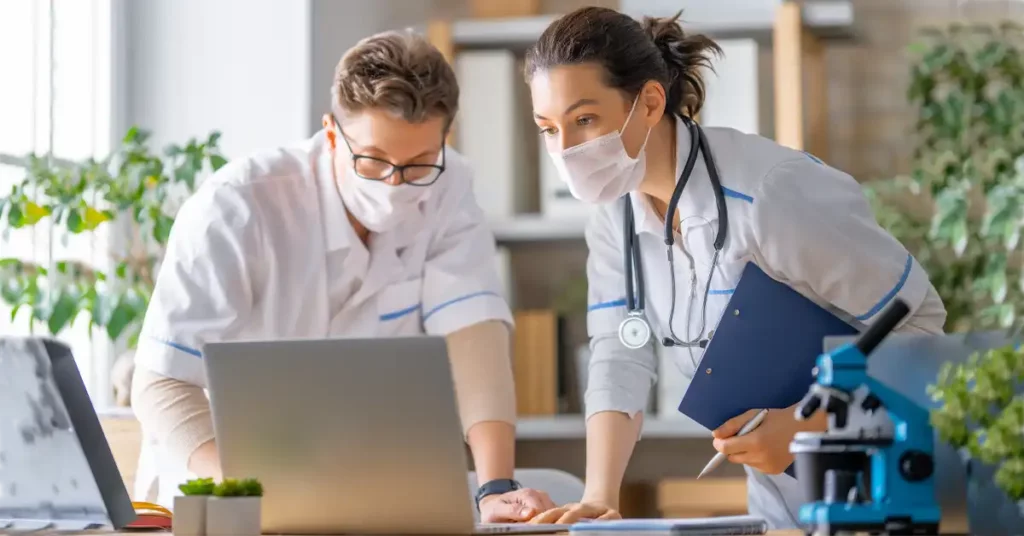Remote patient monitoring (RPM) services have become increasingly popular for medical professionals looking to enhance patient safety and provide quality care to their patients. Patient safety is an issue that has been of grave concern in the medical industry for many years. The introduction of remote patient monitoring services provides much needed solutions to this problem.
RPM technology allows doctors to track and monitor the health of their patients from a distance, ensuring that any medical issues are addressed quickly and effectively. Furthermore, it gives patients greater peace of mind knowing that their medical needs are being taken care of even when they are not physically present at a doctor’s office.
This guide will provide the best practices for RPM services to boost patient safety and ensure that your patients are receiving the best care possible.
1. Create a Personalized Care Plan for Each Patient
A personalized care plan is an essential part of ensuring patient safety under telehealth and RPM.
The best way to create a personalized care plan is to gather as much information as possible about the patient before starting them on the RPM program. This includes their medical history, current medications, and dietary restrictions. A provider should also ask the patient about their lifestyle and daily routine.
Using personalized care plans in RPM can have a positive impact on preventing medication errors. By leveraging patient-specific data to create individualized treatment plans, healthcare providers are able to more accurately assess, predict and manage patient health in a timely manner. Using advanced analytics and machine learning (ML) in RPM programs, these plans can be tailored to meet the unique needs of a given patient, providing a comprehensive view of patient medications and any potential risks associated with using certain drugs.
2. Make Sure Patients are Familiar with Remote Patient Monitoring Devices and Applications
Educating patients on how to use RPM devices and applications can help them feel more comfortable and informed about their care.
Before starting an RPM program, it is important that the clinician or care team members spend time educating patients on how to properly use the devices. This may include showing them how to connect the device (such as a blood pressure monitor, weight scale, or pulse oximeter) to their smartphone, how to wear or mount the device, and how to take and interpret the measurements of their vital signs.
Knowing how to use medical devices properly in RPM can help patients avoid incorrect measurements of their vital signs. This can prevent incorrect medications or treatments, which can help patients stay safe and healthy.
Healthcare providers can benefit from choosing an RPM partner that offers user-friendly medical devices and mobile app, which allow for the automated and secure transmission of health data.
3. Ensure Patient Medication Compliance
Failure to adhere to prescribed medications can have detrimental effects not only on patients, but also on healthcare providers. For patients, non-adherence to medications can lead to worsening of their health conditions, increased hospitalizations, and even death. For healthcare providers, it can be frustrating and time-consuming to try to address the consequences of non-adherence, and it can also lead to increased workload and strain on the healthcare system. In addition, non-adherence can result in negative outcomes for healthcare providers, including decreased patient satisfaction and potential legal consequences if the non-adherence leads to negative outcomes for the patient.
According to a 2011 study from the Oman Medical Journal, patients are often non-compliant with medications for long-term chronic conditions, such as hypertension, due to the lack of noticeable symptoms despite lack of compliance to the prescribed regimen. In addition, medication compliance rates have been observed to drop dramatically by 50% when medication is required over an extended period.
To ensure patient medication compliance in RPM programs, it is important to consider the use of evidence-based tactics such as medication reminders, automated alerts, and patient education.
Optimizing clinician-patient communication is important in order to foster collaboration and support patient self-management. This involves communication among care team members, especially for patients with multiple conditions under Chronic Care Management (CCM). Consistent data collection should be encouraged in order to effectively assess outcomes related to patient adherence.
When selecting an RPM company, it is important to ensure that they provide real-time and continuous monitoring capabilities. These monitoring capabilities will ensure appropriate patient medications and treatments based on their current and continuously updated health data. This can also help in reducing the number of adverse drug events, promoting patient adherence, reducing hospitalizations, and improving patient outcomes.
4. Utilize Automated Alerts and Notifications
Automated alerts and notifications are a key component of telehealth and remote patient monitoring (RPM), so it is essential to choose an RPM partner that can provide timely alerts and notifications. The company should have an easy-to-use interface and allow the ability to set thresholds in patient vital signs for alerts and notifications. Taking these considerations into account will make it easier to boost patient safety.
According to a 2017 Vocera study, 69% of accidental deaths and injuries that occur in hospitals are due to communication breakdowns. An overwhelming amount of data is available; however, it is often stored in separate systems, with care team members having limited time to evaluate what information would be most beneficial for their patients. Thus, mobile alerts and alarms sent directly to care team members can improve patient safety by ensuring they receive necessary notifications.
By utilizing automated alerts and notifications in RPM, healthcare providers can provide medical intervention when needed, and patients can be reminded to take prescribed medications, visit the doctor for checkups, and perform necessary self-care activities like monitoring their blood pressure or sugar levels. These reminders help ensure that patients remain on top of their own health needs, allowing them to avoid more serious health problems down the line.
5. Ensure Your Remote Patient Monitoring System is Highly Secure
Protecting patient data is a part of patient safety. It is essential to choose an RPM partner with the latest cybersecurity measures, and that has passed the highest standards in healthcare security.
To ensure patient data is secure, the RPM technology provider should offer multifactor authentication, end-to-end data encryption, and regularly updated password protection. Doing all of this will help safeguard sensitive data from potential cyber threats and provide peace of mind for both health care providers and patients alike.
With the right security measures in place, the provider can ensure patient privacy is always maintained while providing best-in-class RPM services.
How DrKumo Real-Time Continuous Remote Patient Monitoring Technology Solutions Boost Patient Safety
DrKumo is the leader in remote patient monitoring technology solutions that allows healthcare providers to monitor the health and vital signs of their patients continuously and in real-time. This cutting-edge technology provides a continuous stream of data that originates from the patient’s home, enabling physicians to take action immediately in the event of any changes or abnormalities.
The DrKumo RPM technology solutions are designed to personalize and improve the quality of care for patients, as well as reduce medical costs by eliminating unnecessary visits. Their system offers a range of features designed to ensure patient safety, from basic monitoring and alerts, to cybersecure transmission, to more sophisticated artificial intelligence-driven diagnostics and analytics.
DrKumo provides a range of medical devices such as a blood pressure monitor, smart weight scale, pulse oximeter, and smart watch, to name a few. The RPM devices are easy to use and easy to connect to a mobile device, enabling patients to measure vital signs and securely transmit this data to healthcare providers via a secure cloud-based platform supported by advanced cybersecurity measures.
As a leader in the industry, DrKumo RPM technology solutions has been improving patient outcomes, reducing hospitalizations and readmissions, and saving lives.
Takeaway
By following the best practices in Remote Patient Monitoring (RPM) services outlined in this article, healthcare providers can ensure that they are providing their patients with the highest levels of patient safety through the gathering of a higher quantity and quality of patient health data.
DrKumo is looking forward to partnering with you to help ensure patient safety in your Remote Patient Monitoring (RPM) program. Contact us now.









